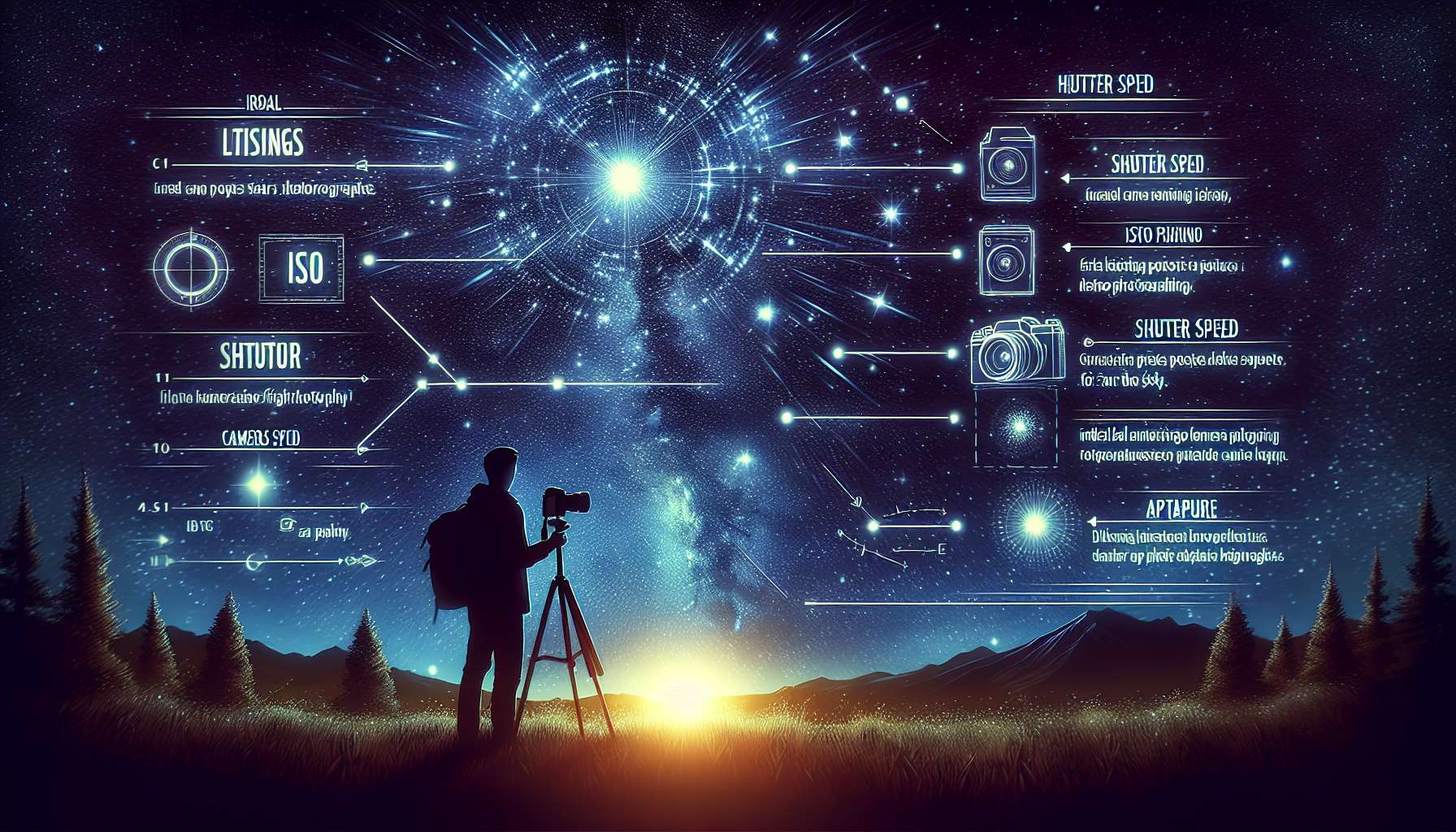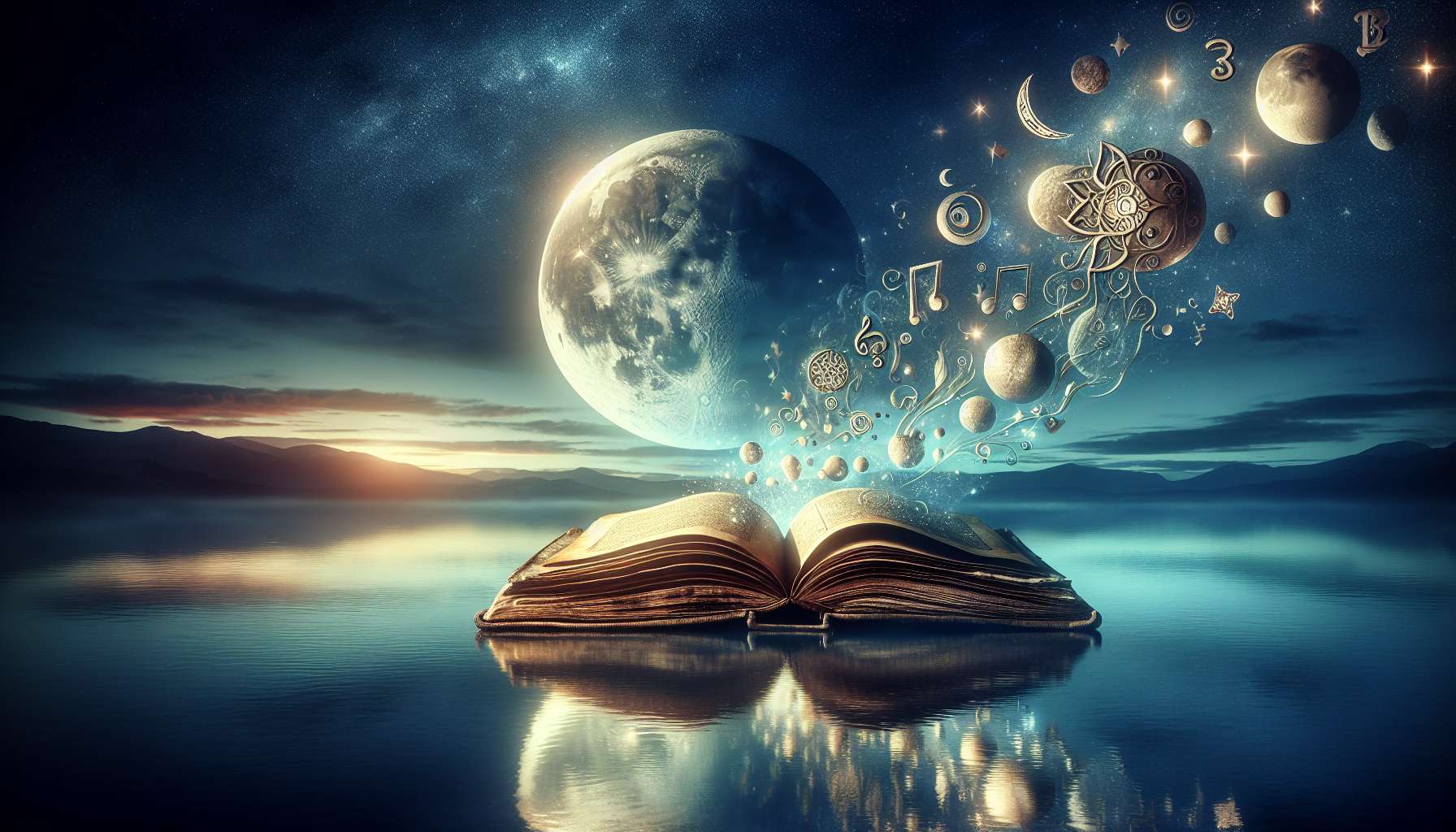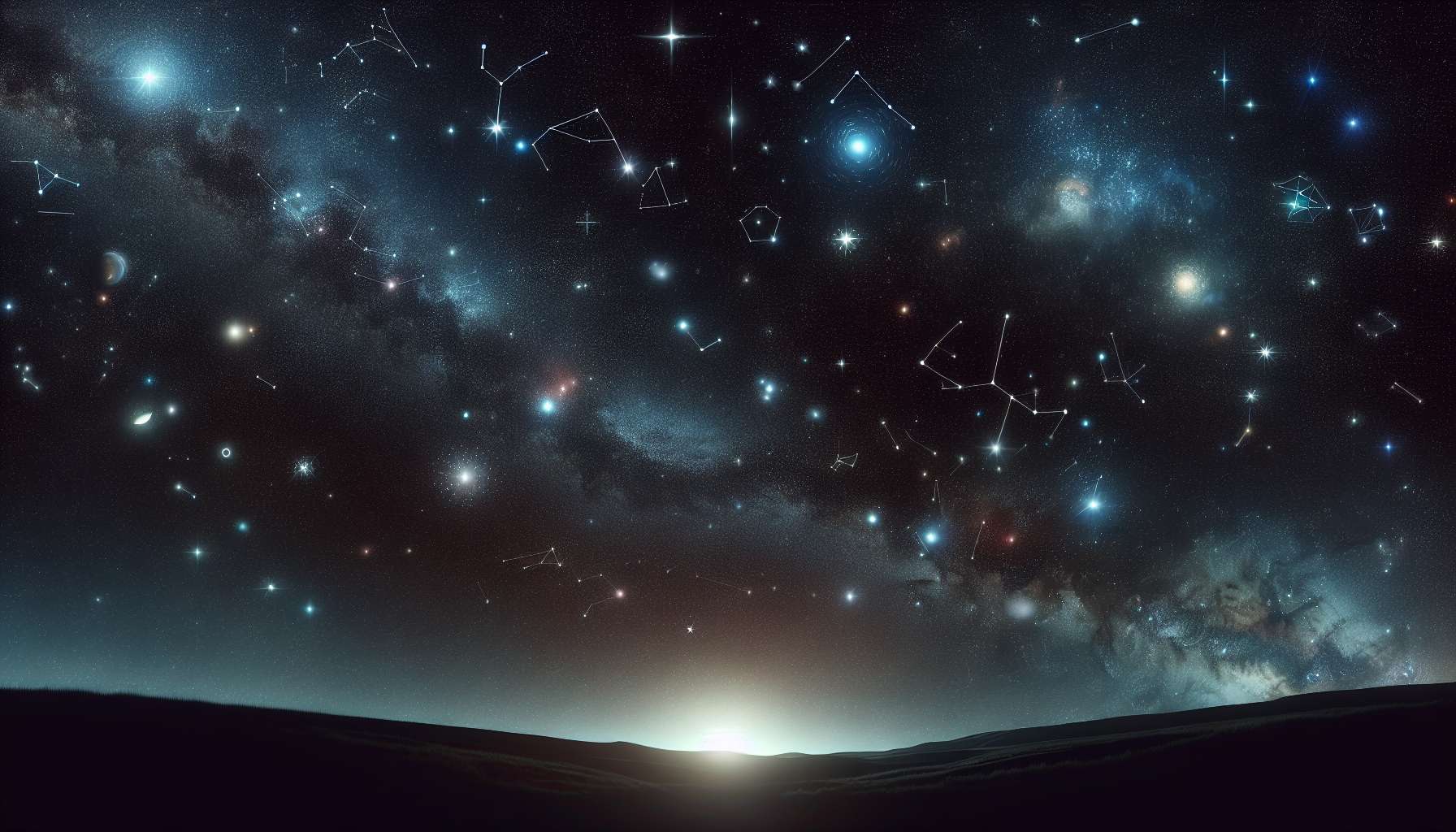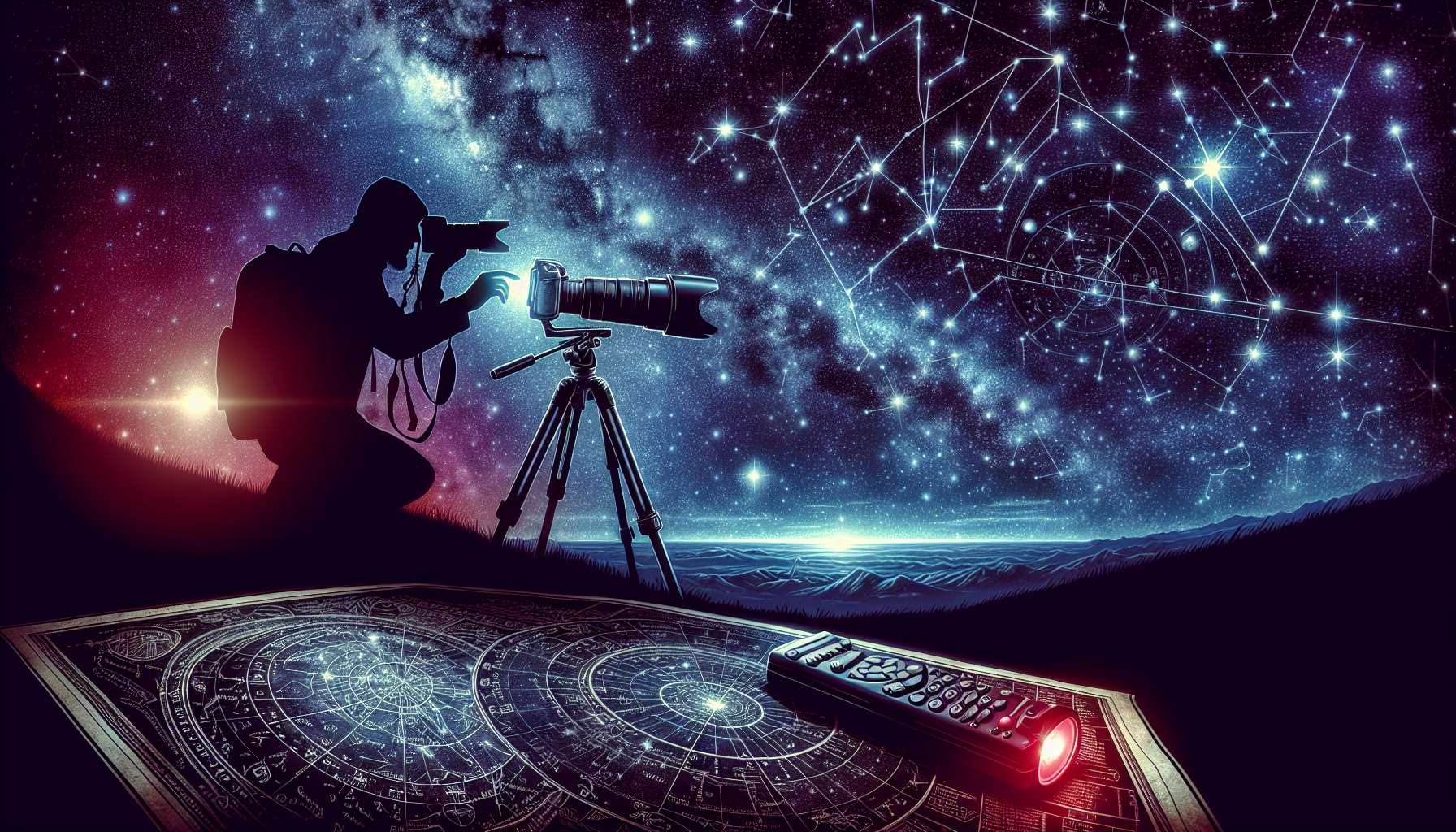Astral Ambiance Photography Tips: Capturing the Mystical Beauty of the Night Sky
Have you ever gazed up at the night sky, mesmerized by the twinkling stars and the vast expanse of the cosmos? The beauty of the night sky has captivated humans for centuries, inspiring art, literature, and scientific exploration. In recent years, a growing number of photographers have turned their lenses towards the heavens, seeking to capture the ethereal beauty of the night sky in their images. This emerging genre of photography, known as astral ambiance photography, offers a unique and enchanting perspective on the world above us.
In this article, we will delve into the world of astral ambiance photography, exploring the tips, techniques, and equipment needed to capture stunning images of the night sky. From choosing the right location to mastering long exposure photography, we will cover everything you need to know to take your nocturnal photography skills to the next level. So, grab your camera, set up your tripod, and let’s embark on a journey through the stars!
Choosing the Right Location
One of the most important considerations when shooting astral ambiance photography is choosing the right location. Light pollution from cities and towns can significantly impact the visibility of stars and other celestial objects in the night sky. To capture clear, crisp images of the stars, it is essential to find a location with minimal light pollution. This might mean traveling to remote areas, such as national parks or rural countryside, where the night sky is free from the glare of artificial lights.
When scouting locations for astral ambiance photography, consider using light pollution maps to find areas with low levels of light pollution. Websites like Light Pollution Map (www.lightpollutionmap.info) can help you identify dark sky locations near you. Additionally, look for areas with interesting foreground elements, such as mountains, trees, or bodies of water, to add depth and context to your images.
Remember to check the weather forecast before heading out to shoot. Clear, cloudless nights are ideal for astral ambiance photography, as clouds can obscure the stars and moon. Planning your shoot around the phases of the moon can also enhance the quality of your images. New moon nights are best for capturing the Milky Way and other faint celestial objects, as the sky is darkest during this phase.
Mastering Long Exposure Photography
Long exposure photography is a fundamental technique in astral ambiance photography, allowing you to capture the movement of stars across the night sky. To achieve stunning astral ambiance images, you will need to master the art of long exposure photography and understand how to set your camera’s exposure settings for nighttime shooting.
When shooting long exposures of the night sky, use a sturdy tripod to prevent camera shake and ensure sharp, clear images. Set your camera to manual mode and choose a wide aperture (low f-stop) to let in as much light as possible. Start with an ISO of around 800-1600 to capture enough light without introducing too much noise into your images.
Experiment with different shutter speeds to find the optimal exposure time for your shots. For capturing star trails and movement in the night sky, try exposure times of 30 seconds to several minutes. Use a remote shutter release or the camera’s built-in timer to prevent camera shake when pressing the shutter button.
When composing your shots, focus on infinity to ensure that the stars and other celestial objects are sharp and in focus. You may need to use manual focus and adjust the focus ring until the stars appear crisp in the viewfinder. Consider using the rule of thirds to create visually appealing compositions, placing the horizon line or other elements of interest along the gridlines for balance and symmetry.
Utilizing the Right Equipment
While astral ambiance photography can be done with basic equipment, having the right gear can elevate the quality of your images and make the shooting process more efficient. Here are some essential pieces of equipment for capturing stunning astral ambiance photos:
1. Camera: A DSLR or mirrorless camera with manual exposure controls and the ability to shoot in RAW format is ideal for astral ambiance photography. These cameras offer greater flexibility in post-processing and produce higher-quality images than point-and-shoot cameras.
2. Lens: A wide-angle lens with a fast aperture (f/2.8 or lower) is essential for capturing the vast expanse of the night sky and maximizing light gathering capabilities. Popular choices for astral ambiance photography include the Rokinon 14mm f/2.8 and the Sigma 20mm f/1.4 ART.
3. Tripod: A sturdy tripod is essential for shooting long exposures and keeping your camera stable during nighttime shooting. Look for a tripod with a ball head or pan-tilt head for easy adjustments and precise composition.
4. Remote Shutter Release: A remote shutter release or cable release allows you to trigger the camera without touching it, minimizing vibrations and ensuring sharp images. Alternatively, you can use the camera’s built-in timer for hands-free shooting.
5. Light Painting Tools: For adding creative lighting effects to your astral ambiance photos, consider using light painting tools such as LED flashlights, glow sticks, or color gels. These tools can help you illuminate foreground elements and create dynamic compositions.
Investing in quality equipment can make a significant difference in the quality of your astral ambiance images and expand your creative possibilities. Experiment with different lenses, filters, and accessories to discover new techniques and styles that suit your artistic vision.
Post-Processing Techniques
Post-processing plays a crucial role in enhancing the beauty and visual impact of astral ambiance photos. By using editing software such as Adobe Lightroom or Photoshop, you can fine-tune your images, adjust exposure and contrast, reduce noise, and bring out the details in the night sky.
When editing astral ambiance photos, pay attention to the white balance settings to ensure accurate colors and tones. Cool tones are often preferred for night sky images, creating a sense of mystery and tranquility. Adjust the exposure, contrast, and highlights to bring out the details in the stars and celestial objects while maintaining a balanced overall look.
Experiment with creative editing techniques such as adding vignettes, adjusting curves, or applying selective sharpening to highlight specific areas of the image. Consider using presets or filters to speed up your editing workflow and maintain a consistent look across your astral ambiance photography portfolio.
Remember that post-processing is a personal and artistic process, and there are no strict rules when it comes to editing astral ambiance photos. Trust your creative instincts and experiment with different editing styles to develop a unique and compelling aesthetic that reflects your vision and style as a photographer.
Expert Opinions
To gain further insights into astral ambiance photography, we reached out to renowned astrophotographer and night sky enthusiast, Dr. Emily Jones. With years of experience capturing the beauty of the cosmos, Dr. Jones shared her thoughts on the art and science of astral ambiance photography:
“Astral ambiance photography offers a unique opportunity to connect with the natural world and explore the mysteries of the universe through the lens of a camera. By immersing yourself in the night sky, you can capture the fleeting beauty of the stars and create images that inspire wonder and awe in viewers.”
Dr. Jones emphasizes the importance of patience and dedication in mastering astral ambiance photography, noting that capturing stunning images of the night sky requires practice, experimentation, and a deep appreciation for the natural world. She encourages aspiring astrophotographers to embrace the challenges of nighttime shooting and to persevere in their quest to capture the magic of the cosmos.
Common Misconceptions
One common misconception about astral ambiance photography is that expensive equipment is necessary to capture stunning images of the night sky. While high-quality gear can enhance the quality of your photos, it is still possible to achieve impressive results with basic equipment and a creative approach to shooting. With the right techniques and a keen eye for composition, you can create captivating astral ambiance photos that rival those taken with professional-grade gear.
Another misconception is that astral ambiance photography is a solitary pursuit that requires venturing into remote locations far from civilization. While shooting in dark sky locations can yield incredible results, it is also possible to capture compelling astral ambiance images in urban or suburban areas with careful planning and creative composition. By embracing the challenges and opportunities of shooting in different environments, you can expand your creative horizons and discover new perspectives on the night sky.
FAQs
Q: What is the best time of year to shoot astral ambiance photography?
A: The best time of year to shoot astral ambiance photography depends on the celestial events you want to capture. Spring and summer months are ideal for capturing the Milky Way, while fall and winter months offer opportunities to photograph constellations, meteor showers, and other celestial phenomena.
Q: Do I need a full-frame camera for astral ambiance photography?
A: While full-frame cameras offer superior low-light performance and image quality, you can still achieve excellent results with a crop sensor camera. The key is to use fast lenses with wide apertures and master the art of long exposure photography to capture stunning astral ambiance images.
Q: How can I reduce noise in my astral ambiance photos?
A: To reduce noise in your astral ambiance photos, shoot at lower ISO settings, use noise reduction software in post-processing, and avoid long exposures in extreme temperatures. Experiment with different noise reduction techniques to find the best approach for your images.
To Wrap Things Up
Astral ambiance photography offers a mesmerizing glimpse into the beauty and wonder of the night sky, allowing photographers to capture the mystical allure of the cosmos in their images. By following the tips and techniques outlined in this article, you can elevate your nocturnal photography skills and create stunning astral ambiance photos that inspire and captivate viewers.
Remember to choose the right location, master long exposure photography, utilize the right equipment, and experiment with post-processing techniques to enhance the quality and visual impact of your astral ambiance images. Embrace the challenges and opportunities of shooting in the dark of night, and let your creativity and passion for the stars guide you on a journey through the heavens.




